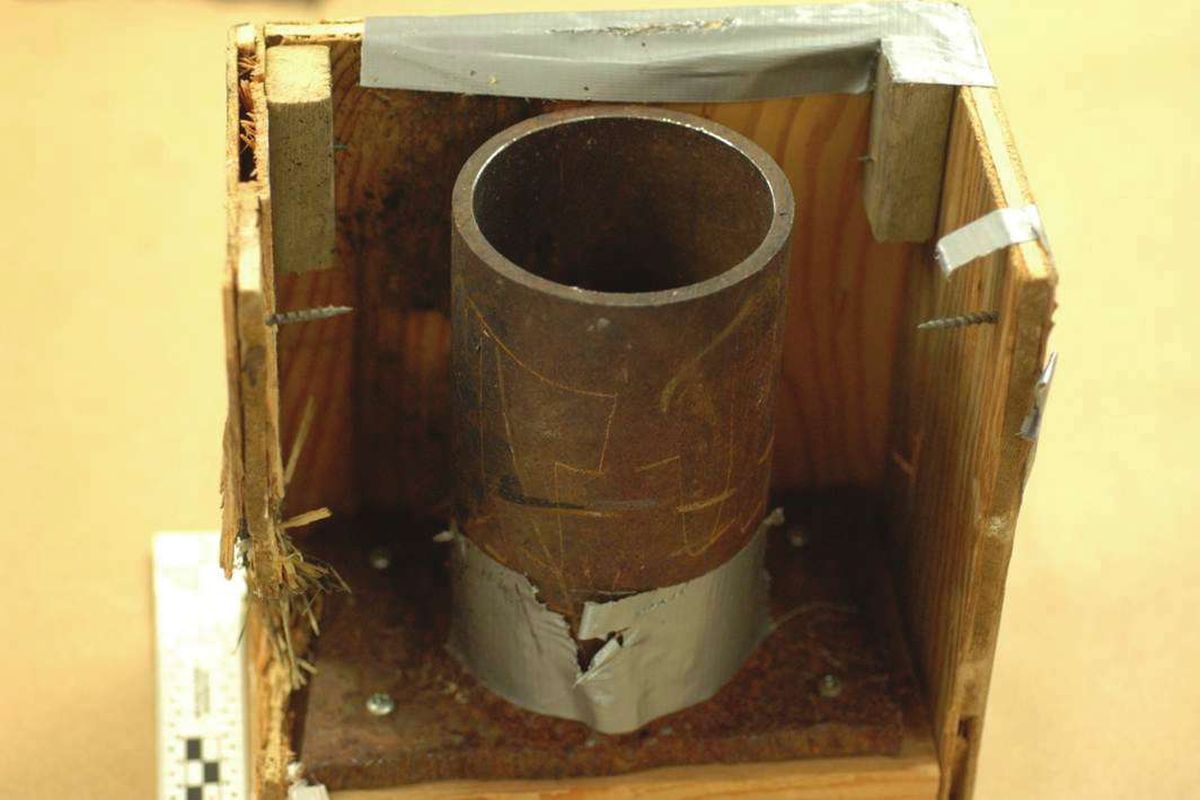New details emerge on MLK bomb

A “joint intelligence bulletin” issued on the day federal agents raided the Colville home of Kevin W. Harpham suggests that the bomb may have included a rocket motor igniter and was made in such a way to focus shrapnel at a specific target.
The bomb consisted of a steel pipe with a hole drilled at its base. “The pipe was welded to a roughly cut steel plate,” according to the report, which was posted to a research Web site Wednesday. The explosive charge was described as black powder, which was contained in a plastic bag.
“While not yet confirmed, the initiator appears similar to a rocket motor igniter,” the report states. “An RMI was used in a crude IED carried by a lone individual who took hostages and threatened employees in the Discovery Channel Building” in Silver Spring, Ma., on Sept. 1, 2010.
Frank Harrill, the supervisory senior resident agent in charge of the FBI, said he could not answer any questions when asked about the authenticity of the report. “I can’t comment at all in any form.”
The bomb was located on Jan. 17 along the planned route of the Unity March for Martin Luther King Jr. Day in downtown Spokane. The investigation culminated with the arrest last Wednesday of Harpham, 36, who has no previous felony criminal record.
Under the pseudonym Joe Snuffy, Harpham, had for years posted to the racist Internet site Vanguard News Network about race war fantasies, including vitriolic rants aimed at nearly every ethnicity.
Harpham wrote of ways to dismantle society, seeking advice on stockpiling ammunition and acquiring guns and offering to house a prominent white supremacist and Canadian hate crime fugitive.
The newly released report, posted at publicintelligence.net, confirmed several details that had previously been reported about how the bomb was made, including how the bomb’s shrapnel had been laced with chemicals found in common rat poison.
The bomb’s triggering device appeared to be a car alarm receiver which was designed to receive a signal from a transmitter “held by the perpetrator(s), which has not yet been identified or recovered,” the report states.
The shrapnel used was lead fishing weights and the “entire pipe IED assembly was contained within an open-ended plywood box wrapped in several t-shirts, which in turn were wrapped several times with tape. The bundle was concealed in the backpack,” the report said.
The bomb was determined to be viable, meaning it could have been detonated “but it did not receive the initiation signal from the transmitter. However, it has not been determined whether initiation of the device was attempted,” the report states.
The report indicated that the bomb was a “low overall level of sophistication” but also said that use of a car alarm receiver “may indicate that the bomb maker possesses a higher degree of knowledge and skill than the typical pipe bomb builder.”
FBI and Homeland Security agents believe that Harpham could have learned how to build the bomb “through open sources. Information regarding the use of car alarms in IEDs can be found in open sources and an individual with moderate knowledge of electronics could likely determine the connections necessary to build such a device.”